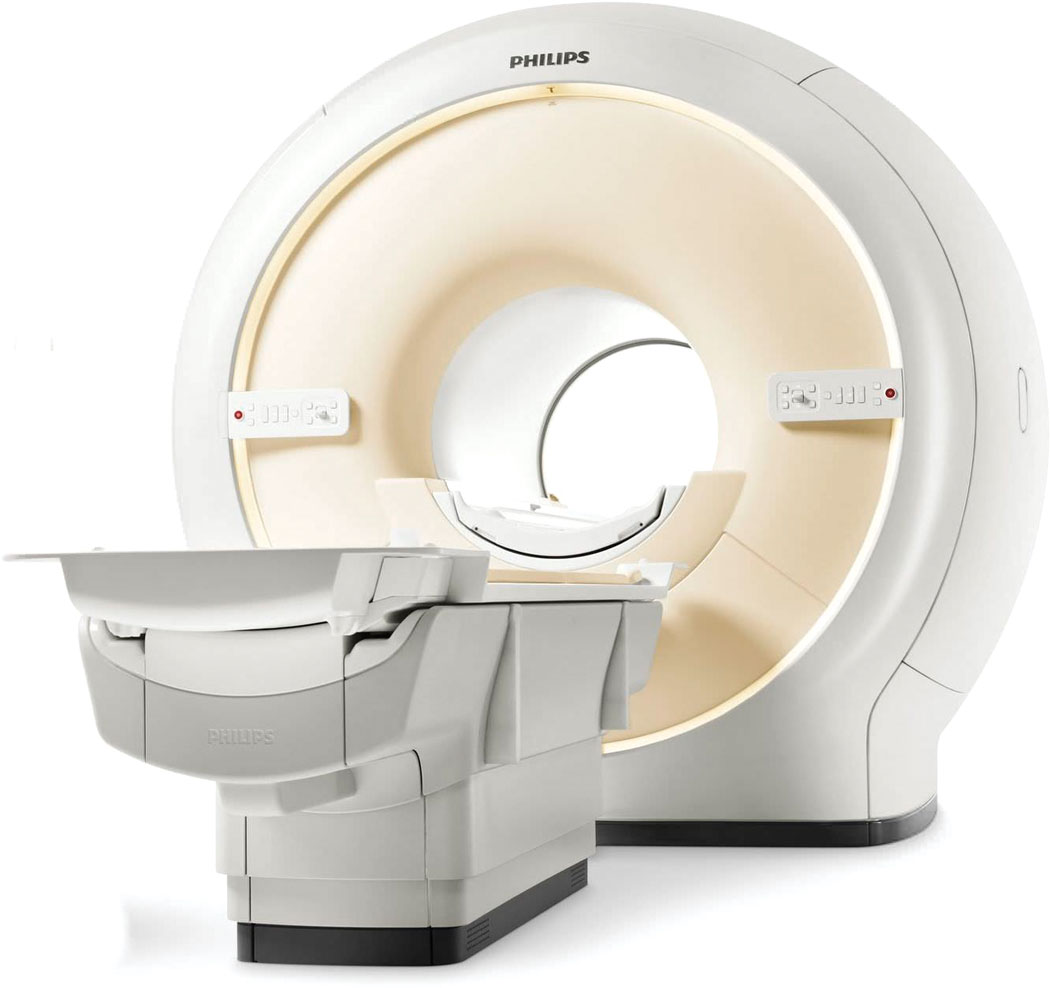
Photo courtesy of Philips Healthcare
Even though magnetic resonance imaging (MRI) has seen its applicability expand in recent years, through innovations such as MR-guided radiation therapy and the modality’s integration with positron emission tomography (PET) scanners, the market as a whole has remained fairly flat. According to Shawn Warthman, marketing director, MRI, at Hitachi, total revenue for the segment in the United States sits in the $750-800 million range.
Signs of the Times
The reasons for the slowdown are numerous, but mostly related to the major financial and technological changes in the healthcare landscape in recent years. Declining reimbursements due to the healthcare industry’s shift from volume-based system to a value-based one are a primary factor, and that movement only continues to expand.
Despite MRI scans not creating any radiation exposure for patients, increased focus on low-dose standards has also slowed MRI sales, according to Warthman. Computed tomography (CT) in particular has been subject to new standards for acceptable dose levels, requiring updated technological performance. “As a result, health systems are needing to replace their older CT scanner with more updated CT scanner technology, which we see delaying MRI purchases,” he said.
New CT scanners are not the only items pushing MRI further and further down the wish list. In fact, the modality is seeing competition throughout the hospital, as new healthcare IT policies and reforms stretch into nearly every department, forcing administrators to prioritize upgrades. In these scenarios, according to Swarthman, top priority is being given to electronic health records and all of the potential benefits they can provide to both health systems and patients.
Wide Bore Still King
While the market as a whole is flat, MRI scanners do continue to sell, mostly as replacements for older systems. Wide bore systems retain their position as the far-and-away most popular choice, accounting for about 90 percent of sales, according to Warthman, and leaving just 10 percent of the market for both open and narrow bore scanners.
Wide bore has been the leading trend in the marketplace for some time, as it offers greater comfort for larger patients while maintaining high image quality. Open MRI scanners still have a niche position in the market thanks to their ability to accommodate even larger patients than wide bore systems. What space advantages they offer, however, are countered by greatly reduced field strength; open MRI scanners have only ever reached a level of 1.0T, according to industry expert Greg Freiherr. Most systems today operate at either 1.5T or 3.0T, providing much greater image quality.
That leaves narrow bore systems largely on the outside looking in, with many health systems replacing them when the opportunity arises. According to Swarthman, only the most cost-sensitive customers are still purchasing narrow bore scanners at this point in time; these types of systems also account for the majority of the refurbished equipment market.
Buyer Base Changing
The most significant change in the MRI market in recent years has not been in the technology itself, but rather in its buyers. All of the changes to reimbursement have shifted the purchasing decisions into the hands of radiology department heads and hospital administrators, with an eye toward maximizing the return on investment of each piece of equipment. In this particular market, that means holding onto existing MRI systems as long as they remain viable — a 2014 survey by IMV Medical Information Division found that the average age of installed MRI scanners in the United States increased from 8.7 years to 11.4 years between 2010 and 2013.
The key concern for this segment of buyers ultimately boils down to total cost of ownership. Clinical function is still critical for sustained success from a patient perspective, but buyers are now taking a step further back. Hospitals want to get the most bang for their buck from all imaging equipment purchased, throughout the full life cycle of the machine. That means figuring in maintenance, upgrades and the potential impact of scanner downtime when selecting an MRI machine.
This does not always, however, translate into buying the least expensive scanner. Narrow bore MRI systems own the lowest price point of all MRI scanner types, but only the most cash-strapped facilities are still purchasing them.
By the same token, wide bore systems are generally the most expensive of all MRI scanners, and yet they remain the most popular choice for health systems when replacing older models. This is likely due to renewed emphasis on creating a more satisfying experience for patients — one of the main pillars supporting the current surge of healthcare reform.


 December 10, 2025
December 10, 2025 









